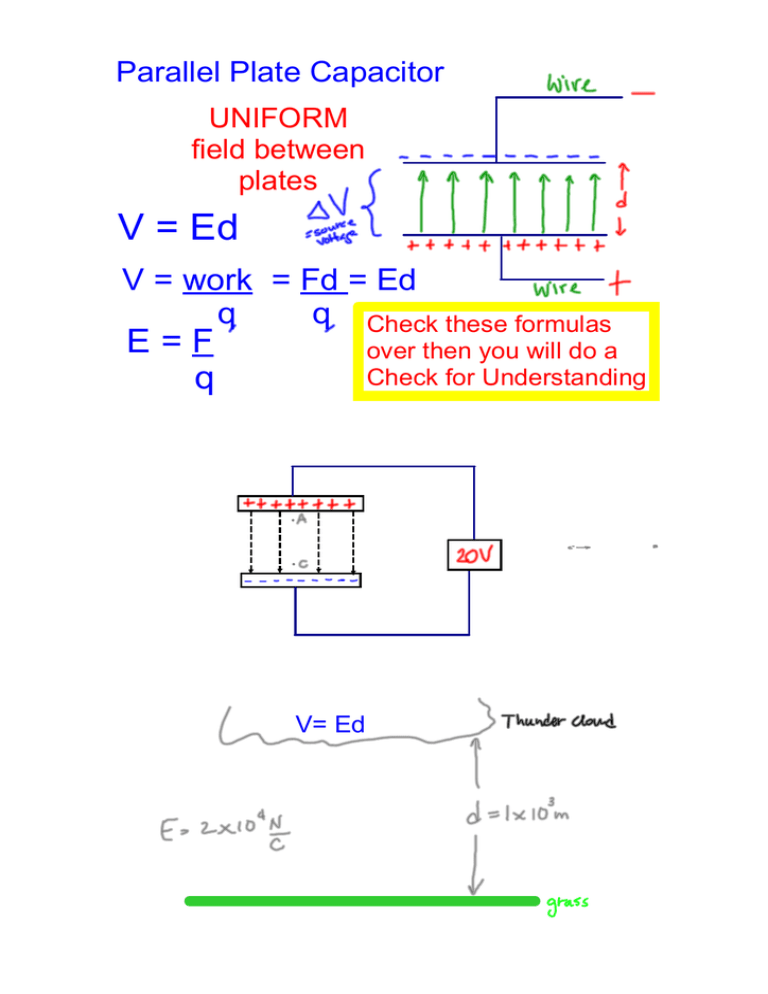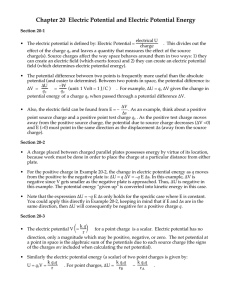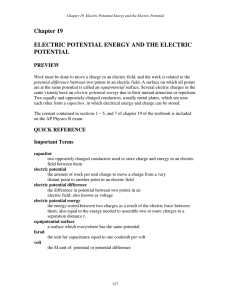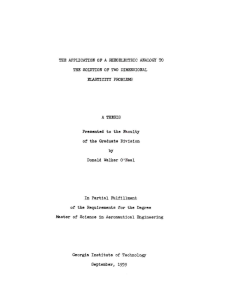V = Ed - HannibalPhysics
advertisement

Parallel Plate Capacitor UNIFORM field between plates V = Ed V = work = Fd = Ed q q Check these formulas E = F q over then you will do a Check for Understanding V= Ed Check for Understanding Potential difference = 10V Negative 1. Draw the electric field lines between the charged plates Positive d = 4cm 3. Calculate the electric field intensity between the plates 2. How much work would be done moving 2 electrons across the potential toward the negative plate? Equipotential Surfaces Equipotential Surfaces No work is required to move a charge at a constant speed along an equipotential surface (dotted line) The electric field at every point along an equipotential surface is perpendicular to the surface Capacitance Capacitance is the ratio of charge on either conducting plate to magnitude of the potential difference between two conducting surfaces Capacitors STORE charge http://hyperphysics.phy­astr.gsu.edu/hbase/electric/pplate.html Practice A parallel plate capacitor has an area of A = 2 X 10­4 m2 and a plate separation of 1 mm. a) Find its capacitance b) How much charge is stored on the positive plate if it is connected to a 3V battery? c) Find the electric field intensity between the plates. http://hyperphysics.phy­astr.gsu.edu/hbase/electric/pplate.html Capacitors STORE electrical energy HW P. 566 # 21, 25, & 26 21. for 100V d = 0.72m for 50V d = 1.44m for 25V d = 2.88m 25. a) C = 1.11 X 10­8F b) Qmax = 26.55C 26. a) C = 2.43 X 10­6F b) Q = 2.205 X 10­6 F







